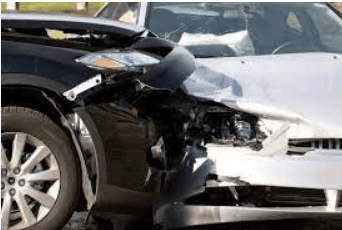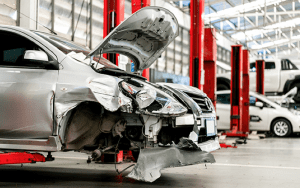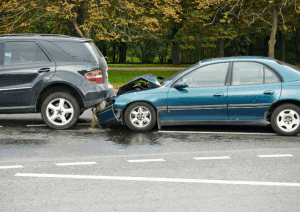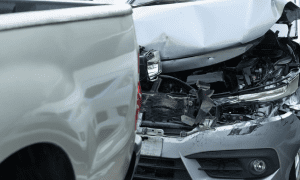meaning of collision repair
– Collision repair refers to the process of restoring a vehicle to its pre-accident condition after it has been involved in a collision or accident. This comprehensive service encompasses repairing both the external and internal damages incurred during the impact. It can involve repairing visible damages such as dents, scratches, and broken parts, as well as addressing more intricate structural damages that may affect the safety and performance of the vehicle.
– Collision repair involves a meticulous and specialized approach, often utilizing advanced equipment and modern techniques to ensure that the vehicle is repaired to the highest standards. This includes realigning the frame, fixing mechanical components, and addressing any issues that may compromise the overall functionality of the vehicle.
– collision repair plays a crucial role in maintaining the value and integrity of the vehicle. A properly executed collision repair not only restores the vehicle’s visual appeal but also ensures that its structural integrity meets safety standards. This is vital for the overall performance and longevity of the vehicle, as any undetected or improperly repaired damage can lead to potential safety hazards and further complications down the road.
– Professional collision repair services are essential in safeguarding both the appearance and functionality of the vehicle. By entrusting skilled technicians and reputable repair facilities, vehicle owners can ensure that their cars are restored to their original condition, offering peace of mind and preserving the investment in the vehicle.
Quality Collision Repair: Ensuring Your Vehicle’s Safety and Value
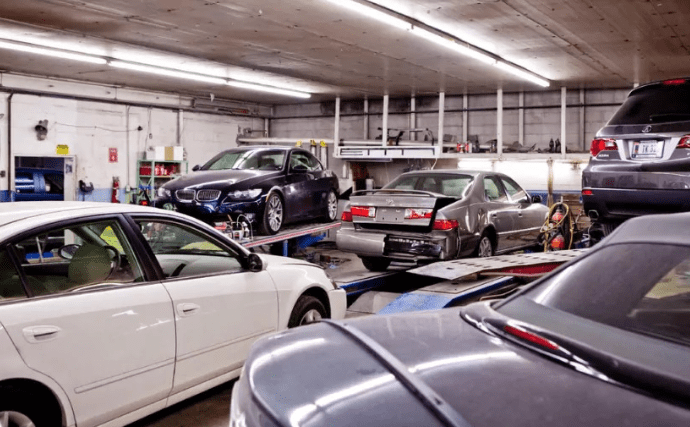
History of collision repair – How Collision Repair Has Changed Over the Years until today
The history of collision repair dates back to the early 20th century, coinciding with the rapid growth of the automotive industry. As automobiles became more commonplace, the need for repairing vehicles damaged in accidents became increasingly evident.
In the early days, collision repair was a rudimentary process, primarily focusing on fixing and reshaping the damaged parts manually. The tools and techniques were basic, often involving hammering out dents and using simple bodywork to restore the vehicle’s shape. Paintwork was often carried out using basic methods, resulting in less refined finishes compared to modern standards.
As the automotive industry evolved, so did the field of collision repair. With the introduction of assembly line production and standardized vehicle designs, the repair process became more streamlined. Body shops began to adopt more advanced tools and equipment, such as hydraulic dent pullers and specialized welding machines, to address the increasing complexity of modern vehicle structures.
The latter half of the 20th century saw a surge in technological advancements, leading to the integration of computerized diagnostic tools and advanced paint-matching systems. These developments revolutionized the collision repair industry, enabling more precise and efficient repairs while ensuring a seamless integration of new components with the existing vehicle structure.
In recent years, the collision repair industry has continued to evolve rapidly, incorporating cutting-edge technologies such as laser measuring systems, computer-aided design (CAD) software, and advanced paint application techniques. These innovations have significantly improved the accuracy, efficiency, and overall quality of collision repairs, ensuring that modern vehicles are restored to their original condition with an unprecedented level of precision and detail.
Today, collision repair has become a highly specialized field, demanding skilled technicians equipped with the latest tools and knowledge to address the intricate structural and technological complexities of modern vehicles. With a strong emphasis on safety, efficiency, and quality, the collision repair industry continues to play a vital role in ensuring the longevity and reliability of vehicles in the face of accidents and collisions.
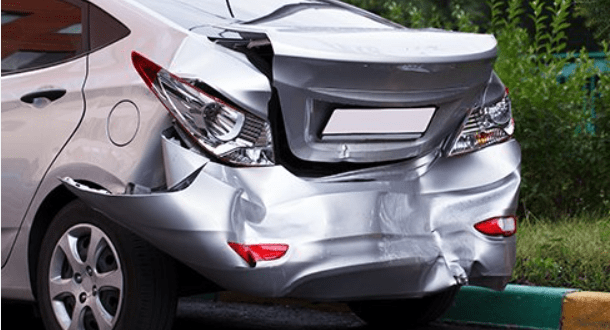
The Importance of Quality Collision Repair Services
Whether it’s a minor fender bender or a major collision, dealing with the aftermath of a car accident can be a daunting experience. One of the most crucial aspects after an accident is finding a reliable collision repair service. A professional collision repair service not only restores the aesthetic appeal of your vehicle but also ensures that it is structurally sound and safe to drive. In this comprehensive guide, we delve into the world of collision repair, shedding light on what it entails, the key benefits, and how to choose the best collision repair service for your needs.
Understanding Collision Repair
Comprehensive Guide to Understanding Prices Collision Centers
Collision repair refers to the process of repairing and restoring a vehicle to its pre-accident condition. It involves fixing any damage caused by a collision, be it a small dent or major structural damage. The primary goal of collision repair is to ensure that the vehicle is not only visually appealing but also safe to operate. This involves a series of intricate procedures, including assessing the extent of the damage, conducting necessary repairs, and ensuring that the vehicle meets safety standards and regulations.
The Significance of Timely Repairs
Timely collision repairs are paramount. Ignoring even minor damages after an accident can lead to more extensive problems in the long run. For instance, a seemingly harmless dent could compromise the structural integrity of the vehicle, making it vulnerable to further damage in the event of another collision. Additionally, delaying repairs might result in rust formation, which can spread rapidly and lead to costly repairs down the line. Therefore, addressing collision-related damages promptly is crucial to avoid exacerbating the issue and incurring additional expenses.
Finding Affordable Solutions: Your Guide to Cheap Collision Repair Near Me
most common collision repair services
Collision repair services encompass a wide array of comprehensive procedures aimed at restoring a vehicle to its pre-accident condition. These services include:
Estimation and Assessment: Professional collision repair services begin with a detailed assessment of the damage. This involves a thorough examination to identify all visible and underlying issues accurately. Technicians use specialized tools and software to provide a precise estimation of the repair costs and the necessary procedures.
Dent Repair: One of the most common issues after a collision is the presence of dents on the vehicle’s body. Skilled technicians utilize various techniques, such as paintless dent repair, to carefully reshape the metal without affecting the paint finish, restoring the vehicle’s smooth and flawless appearance.
Paint Repair and Refinishing: Scratches, scuffs, and paint chips are common occurrences during a collision. Professional collision repair services include paint repair and refinishing, ensuring a seamless color match and a flawless finish that matches the vehicle’s original paint.
Frame Straightening: In more severe collisions, the vehicle’s frame may become misaligned or bent, impacting its structural integrity and safety. Utilizing specialized equipment, skilled technicians perform frame straightening, ensuring that the frame is restored to its original specifications, guaranteeing the vehicle’s stability and safety.
Panel Replacement: In cases where the damage is extensive, certain vehicle panels may need to be replaced. This process involves carefully removing the damaged panels and replacing them with new ones, ensuring that they fit seamlessly and maintain the structural integrity of the vehicle.
Mechanical Repairs: Collision damages can often extend to mechanical components, such as the engine, transmission, or suspension. Skilled technicians conduct thorough inspections and perform necessary repairs to ensure that the vehicle’s mechanical systems are functioning optimally and safely.
Glass Repair and Replacement: Collisions can cause damage to the vehicle’s glass components, including the windshield, windows, and mirrors. Collision repair services encompass repairing minor chips and cracks as well as complete replacements when the damage is extensive, ensuring clear visibility and safety for the driver and passengers.
Wheel Alignment and Suspension Repairs: Misalignments and damage to the suspension system are common after collisions. Professional collision repair services include wheel alignment, ensuring that the vehicle drives smoothly and the suspension functions properly, and providing a comfortable and safe driving experience.
Safety System Inspections and Repairs: Advanced safety systems, such as airbags, sensors, and other electronic components, are thoroughly inspected and repaired to ensure they are in optimal working condition. This is crucial for ensuring the safety of the vehicle’s occupants in the event of any future accidents.
By providing these comprehensive collision repair services, professional technicians ensure that the vehicle is restored to its pre-accident condition, both in terms of appearance and functionality, ensuring the safety and satisfaction of the vehicle owner.
collision repair cost examples in 2023: Real-Life Examples Unveiled
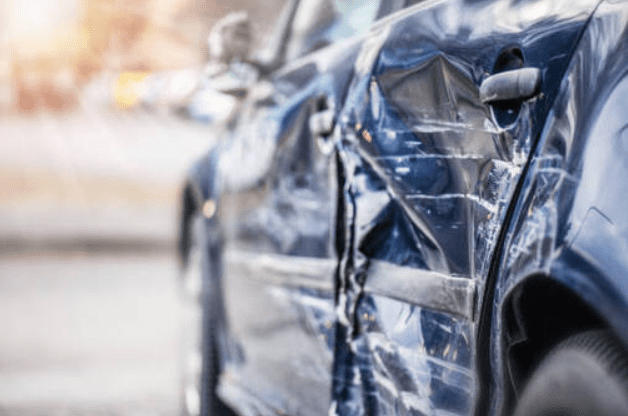
Components of Quality Collision Repair Services
- Expert Assessment: A reputable collision repair service begins with a thorough assessment of the vehicle’s damage. This involves a detailed inspection to identify all visible and underlying issues accurately.
- Skilled Technicians: The proficiency of the technicians is paramount in ensuring high-quality repairs. Well-trained and experienced technicians have the expertise to handle various types of damages and utilize the latest techniques for effective and lasting repairs.
- Quality Parts and Materials: Opting for a collision repair service that uses genuine parts and high-quality materials is vital. This guarantees that the replaced components meet the manufacturer’s standards, ensuring the overall integrity and longevity of the repairs.
- Advanced Equipment: Utilizing state-of-the-art equipment and cutting-edge technology can significantly enhance the efficiency and precision of collision repairs. From computerized diagnostics to modern repair tools, advanced equipment plays a pivotal role in achieving optimal results.
- Transparent Communication: Clear and transparent communication throughout the repair process fosters trust and confidence. A reliable collision repair service keeps you informed about the progress, any challenges encountered, and the estimated timeline for completion.
Westside Collision Center: Your Trusted Partner for Fulshear Car Repair
From Hammers to Lasers: The Tools Used to Repair Collision Damage
The evolution of collision repair tools has been a fascinating journey, reflecting the ever-changing landscape of the automotive industry. Over the decades, the progression from traditional hammers and dollies to sophisticated laser-guided technology has revolutionized the precision, efficiency, and quality of collision repairs. Let’s delve into the detailed history and transformation of these essential tools.
Traditional Hand Tools: In the early days of collision repair, skilled technicians relied on basic hand tools like hammers, dollies, and body files. These manual tools were crucial for reshaping metal panels and restoring the vehicle’s structural integrity. Although effective, this approach was labor-intensive and often required significant expertise to achieve precise results.
Hydraulic Dent Pullers and Frame Machines: With the advancement of technology in the mid-20th century, hydraulic dent pullers and frame machines became indispensable in collision repair shops. These tools allowed technicians to exert controlled force on the damaged areas, enabling them to pull out dents and realign distorted frames more accurately and efficiently.
Advanced Welding Techniques: As vehicles incorporated more complex materials such as aluminum and high-strength steel, collision repair techniques had to adapt accordingly. Modern welding techniques, including MIG (Metal Inert Gas) and TIG (Tungsten Inert Gas) welding, became standard practices for repairing and joining various types of metals, ensuring strong and durable structural repairs.
Computerized Diagnostic Tools: The introduction of computerized diagnostic tools and systems marked a significant milestone in collision repair. These sophisticated tools enabled technicians to assess and identify underlying issues more accurately, providing crucial data on the vehicle’s structural integrity, safety systems, and overall performance, allowing for a more precise and efficient repair process.
Laser Measuring Systems: The integration of laser measuring systems revolutionized the precision of collision repair. These high-tech devices provided precise measurements of the vehicle’s frame and body, ensuring that repairs were carried out with utmost accuracy and alignment. Laser measuring systems helped technicians detect even the slightest deviations, allowing for meticulous adjustments and ensuring the vehicle’s structural integrity and safety.
Computer-Aided Design (CAD) Software: CAD software streamlined the design and repair process, enabling technicians to create detailed digital models and plans for complex repairs. This technology facilitated the production of custom-made parts, ensuring seamless integration with the existing vehicle structure and enhancing the overall efficiency and quality of collision repairs.
Advanced Paint Application Technology: The development of advanced paint application technology, such as electrostatic painting and automated paint mixing systems, transformed the painting process in collision repair. These innovations ensured precise color matching and uniform paint distribution, resulting in flawless and durable finishes that seamlessly blended with the original paint, enhancing the overall aesthetic appeal of the repaired vehicle.
The continuous integration of cutting-edge tools and technologies has elevated the standards of the collision repair industry, ensuring that modern vehicles can be restored to their pre-accident condition with unparalleled precision, safety, and efficiency.
Advanced Collision Repair: Getting Your Vehicle Back on the Road Safely
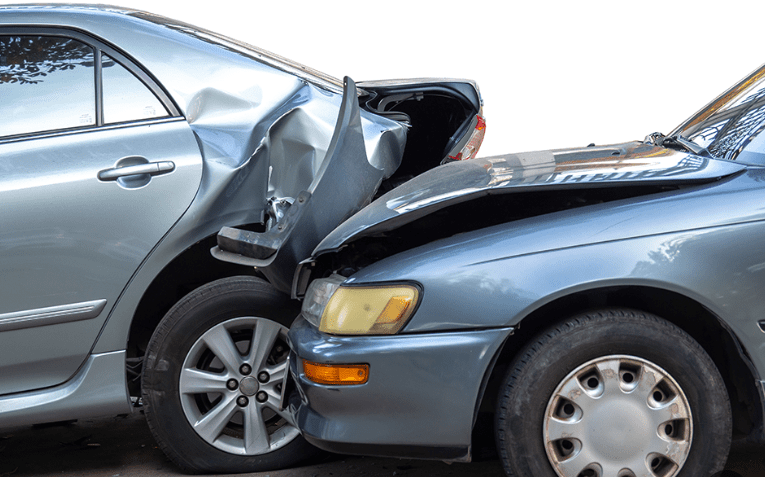
Ultimate Guide to Top-Quality Wheel Repair Houston for Auto Enthusiasts
How Much Does Collision Repair Cost?
The cost of collision repair can vary widely depending on the severity of the damage, the make and model of the vehicle, and the cost of labor in your area. In general, minor collision repairs, such as dent and scratch repair, can cost anywhere from a few hundred dollars to over a thousand dollars.
More extensive damage, such as frame straightening or panel replacement, can cost several thousand dollars or more.
Chrome Bumper Repair Cost: Understanding the Factors and Estimates
Here are some of the factors that can affect the cost of collision repair:
The severity of the damage: The more severe the damage, the more expensive the repairs will be.
The make and model of the vehicle: Parts for some vehicles are more expensive than others.
The cost of labor in your area: Labor costs can vary depending on where you live.
Whether you have insurance: If you have collision insurance, your insurance company will typically cover the cost of repairs, minus your deductible.
If you have been involved in a collision, it is important to get an estimate from a qualified collision repair shop before you make any decisions. The shop will be able to assess the damage and give you a realistic estimate of the cost of repairs.
some tips for saving money on collision repair:
Get estimates from multiple shops before you choose one.
Ask about discounts for cash payments or for being a loyal customer.
See if the shop offers a warranty on its repairs.
Consider using aftermarket parts instead of original equipment manufacturer (OEM) parts. OEM parts are typically more expensive, but they may be required for certain types of repairs.
If you have collision insurance, be sure to check with your insurance company to see what is covered and what your deductible is. You may also want to consider purchasing rental car coverage if your vehicle will be out of service for a period of time.
Tips and tricks to choose the best body shop for collision repair
Choosing the best body shop for collision repair is crucial to ensure that your vehicle receives the highest quality of service and care. Here are some essential tips and tricks to help you make an informed decision:
Seek Recommendations: Ask friends, family, or acquaintances for recommendations based on their past experiences with local body shops. Personal referrals often provide valuable insights into the quality of service and customer satisfaction.
Check for Certifications and Credentials: Look for certifications such as ASE (Automotive Service Excellence) and I-CAR (Inter-Industry Conference on Auto Collision Repair). These certifications signify that the technicians and the shop meet industry standards and possess the necessary expertise to handle collision repairs effectively.
Read Online Reviews and Testimonials: Utilize online platforms to read reviews and testimonials from previous customers. Genuine feedback can offer valuable perspectives on the body shop’s professionalism, customer service, and the quality of repair work they provide.
Visit the Facility: Take the time to visit the body shop in person to assess its cleanliness, organization, and the equipment they use. A well-maintained and properly equipped facility often reflects the shop’s commitment to delivering high-quality work and attention to detail.
Inquire About Warranties: Ask about the warranties offered for the repair work. A reputable body shop typically provides warranties for their services, demonstrating their confidence in the quality of their workmanship and the parts they use.
Evaluate Customer Service: Pay attention to the customer service provided by the staff. A friendly, knowledgeable, and responsive team that addresses your concerns and provides clear communication throughout the repair process is a positive indication of the body shop’s commitment to customer satisfaction.
Assess the Estimation Process: Request a detailed written estimate that outlines the cost of parts, labor, and any additional services. A transparent and comprehensive estimation process demonstrates the shop’s professionalism and ensures that you have a clear understanding of the repair costs and the services included.
Ask About Insurance Support: Inquire whether the body shop has experience working with insurance companies and if they can assist you with the claims process. A shop that can effectively communicate with your insurance provider can simplify the paperwork and ensure a smoother repair experience.
By following these tips and tricks, you can confidently select a reputable and reliable body shop for your collision repair needs, ensuring that your vehicle receives the best possible care and attention.
How choose collision repair near me in Houston
When choosing a collision repair shop in Houston, there are a few things you should keep in mind:
Reputation: Read online reviews and talk to friends and family to see what recommendations they have.
Certifications: Make sure the shop is certified by a reputable organization, such as the National Institute for Automotive Service Excellence (ASE).
Insurance: Check with your insurance company to see if they have a preferred provider list.
Warranties: Ask about the shop’s warranties on parts and labor.
Estimates: Get estimates from multiple shops before you choose one.
Once you have narrowed down your choices, be sure to visit the shops in person and talk to the technicians. You should feel comfortable with the people who will be working on your car and confident in their ability to repair it to its pre-accident condition.
A Comprehensive Guide to Understanding Comprehensive Car Insurance
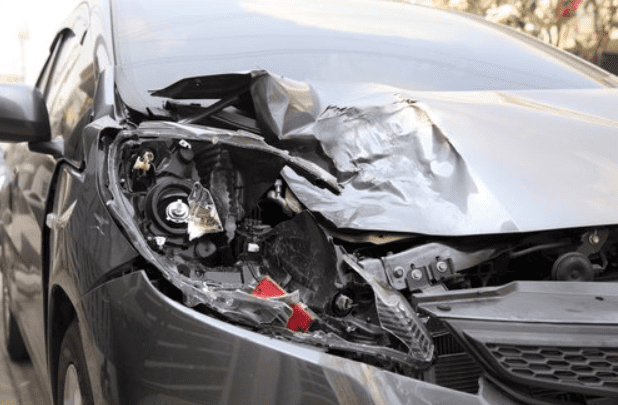
Additional tips for choosing a collision repair me in Houston:
Ask about the shop’s experience with your make and model of car.
Find out if the shop uses OEM parts or aftermarket parts.
Ask about the shop’s turnaround time.
Make sure the shop is licensed and insured.
By following these tips, you can find a reputable collision repair shop in Houston that will do a good job of repairing your car.
Finding the Perfect Body Shop Collision Repair Near Me
Common causes of collision and damage to the vehicle
Various factors contribute to collisions and damage to vehicles on the road. Some common causes include:
Distracted Driving: Activities such as texting, talking on the phone, or adjusting the radio can divert a driver’s attention, leading to collisions with other vehicles or objects.
Speeding: Excessive speed reduces a driver’s ability to react to sudden changes on the road, increasing the likelihood of collisions and severe damage to vehicles.
Reckless Driving: Erratic maneuvers, sudden lane changes, and aggressive driving behaviors can result in collisions, often causing significant damage to the vehicles involved.
Weather Conditions: Adverse weather, including rain, snow, ice, and fog, can create hazardous road conditions, reducing traction and visibility, ultimately leading to collisions and vehicle damage.
Mechanical Failures: Malfunctioning brakes, tire blowouts, or engine problems can result in the loss of control over a vehicle, leading to collisions and potential damage to the vehicle and its surroundings.
Driver Fatigue: Tired or drowsy drivers have reduced reaction times and impaired judgment, increasing the risk of collisions and causing significant damage to vehicles and property.
Intoxicated Driving: Operating a vehicle under the influence of alcohol or drugs impairs a driver’s coordination and decision-making abilities, often resulting in collisions and extensive damage to vehicles and property.
Awareness of these common causes is crucial for promoting safe driving practices and minimizing the risk of collisions and damage to vehicles, ensuring the safety of drivers and passengers on the road.
Collision Repair Fulshear: Restoring Your Vehicle’s Safety and Value
From Damage to Restored: The Process of Collision Repair
The process of collision repair involves a systematic approach to restoring a vehicle to its pre-accident condition. It encompasses several key steps:
Assessment and Estimation: A thorough assessment of the damage is conducted, followed by a detailed estimation of the repair costs, including parts and labor.
Disassembly and Preparation: Damaged components are carefully disassembled, and the vehicle is prepared for the repair process, ensuring a clear and comprehensive approach to addressing all issues.
Structural Repair: Structural repairs, including frame straightening and alignment, are performed to ensure the vehicle’s structural integrity and safety standards.
Body Repair and Replacement: Skilled technicians perform body repairs, addressing dents, scratches, and other visible damages. They may also replace damaged panels and components to restore the vehicle’s original appearance.
Paint and Refinishing: Advanced paint-matching techniques are used to seamlessly blend new paint with the existing finish, ensuring a flawless and consistent appearance.
Reassembly and Quality Checks: All repaired and replaced components are reassembled, and comprehensive quality checks are conducted to ensure that the vehicle meets safety and quality standards.
Final Inspection and Delivery: A final inspection is performed to verify the completion of all repairs. The vehicle is then delivered to the owner, fully restored, and ready for the road.
By following this meticulous process, collision repair professionals ensure that vehicles are restored to their pre-accident condition, both functionally and aesthetically, providing customers with peace of mind and a safe, reliable vehicle.
dent and scratch repair near me

How to check my car after a collision repair – check the quality of the auto body shop
Here are some tips on how to check your car after collision repair and assess the quality of the auto body shop:
Inspect the exterior
Look for any uneven gaps or misalignments between body panels.
Make sure that all lights and reflectors are working properly.
Check the paint job for any blemishes or defects.
Make sure that all doors, windows, and other moving parts open and close smoothly.
Inspect the interior
Check the dashboard and other interior panels for any cracks or damage.
Make sure that all airbags are properly deployed and inflated.
Test all of the vehicle’s controls and features to make sure they are working properly.
Take it for a test drive
read also post collision repair inspection near me
Drive the car on a variety of road surfaces to see how it handles.
Pay attention to any unusual noises or vibrations.
Test the brakes and acceleration to make sure they are working properly.
Ask the shop for a warranty
A reputable auto body shop should offer a warranty on their work. This will protect you in case there are any problems with the repairs down the road.
If you find any problems with your car after collision repair, be sure to bring it back to the shop immediately. They should be willing to fix any problems at no additional cost.
Here are some additional tips for assessing the quality of an auto body shop:
Check the shop’s reputation by reading online reviews and talking to friends and family.
Make sure the shop is certified by a reputable organization, such as the National Institute for Automotive Service Excellence (ASE).
Ask about the shop’s experience with your make and model of car.
Find out if the shop uses OEM parts or aftermarket parts.
Ask about the shop’s turnaround time.
Make sure the shop is licensed and insured.
By following these tips, you can help to ensure that your car is repaired properly and that you are getting the best possible service from the auto body shop.
vehicle hail damage repair near me
what is an example of collision repair?
An example of collision repair is the process of restoring a vehicle’s damaged body and structure after an accident. This may involve repairing dents, scratches, and broken components, as well as addressing more extensive structural damage to ensure the vehicle’s safety and functionality. The repair typically includes realigning the frame, replacing damaged parts, and refinishing the exterior to match the original appearance of the vehicle.
what is the main goal of collision repair?
The main goal of collision repair is to restore a vehicle to its pre-accident condition, both in terms of appearance and functionality. This involves repairing or replacing damaged parts, as well as straightening and aligning the vehicle’s frame.
In addition to restoring the vehicle’s physical condition, collision repair also aims to ensure that the vehicle is safe to drive. This includes repairing or replacing any safety features that were damaged in the accident, such as airbags and seatbelts.
Collision repair is a complex process that requires the expertise of trained professionals. However, it is an important process to ensure that your vehicle is safe and reliable after an accident.
What is the meaning of collision center?
A collision center, often referred to as a collision repair center or auto body shop, is a facility specializing in repairing vehicles that have been involved in collisions or accidents.
These centers employ skilled technicians who are trained in assessing and repairing various types of damage, including dents, scratches, and structural issues caused by collisions.
Collision centers typically offer a range of services such as dent repair, frame straightening, paint refinishing, and the replacement of damaged components.
for collision repair in houston call us at (713)243-3535
What is the most expensive repair on a vehicle?
The most expensive repair on a vehicle is typically the replacement of the engine or transmission. These are the two most important components of a vehicle, and they are also the most complex and expensive to repair or replace.
The cost of replacing an engine or transmission can vary depending on the make and model of the vehicle, as well as the cost of labor in your area. However, it is not uncommon for these repairs to cost several thousand dollars or more.
Other expensive vehicle repairs include:
Frame straightening
Panel replacement
Hybrid battery replacement
Turbocharger replacement
Head gasket replacement
These repairs are often necessary after a major collision or after the vehicle has experienced a significant amount of wear and tear.
While expensive repairs can be frustrating, it is important to keep in mind that they are sometimes necessary to ensure the safety and reliability of your vehicle. If you are faced with a major repair, it is important to get estimates from multiple shops and to choose a reputable shop with a good track record.
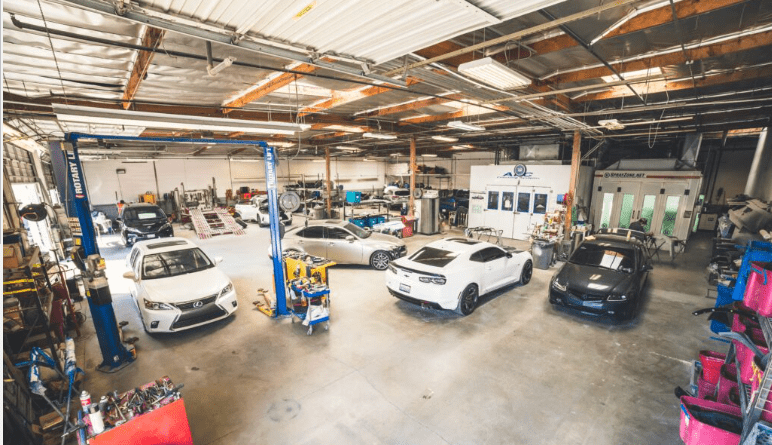
How long should collision repair take?
The duration of collision repair can vary based on the extent of the damage and the specific repair needs of the vehicle. Typically, minor repairs might take a few days.
while more extensive repairs could take several weeks, especially if there are delays in parts delivery or if the repair involves intricate work. It is advisable to consult with the repair shop to get a more accurate estimate based on the specific circumstances of your collision.
best collision repair in houston
Is collision repair expensive?
Collision repair costs can vary significantly depending on the severity of the damage and the specific make and model of the vehicle. Minor repairs or cosmetic fixes may be relatively affordable, while more extensive repairs involving structural damage or complex parts replacement can be considerably expensive.
It’s essential to obtain an estimate from a reputable repair shop to understand the potential costs associated with your specific collision repair needs.
when should collision insurance be dropped?
Collision insurance can be considered for removal when the cost of the insurance premiums exceeds the value of the vehicle. If the vehicle’s value is low and the potential repair costs are not financially burdensome, some may choose to drop collision insurance.
However, it is crucial to consider personal financial circumstances and the ability to cover potential repair or replacement costs in case of an accident.
is collision repair hard?
Yes, collision repair can be hard.
It requires a variety of skills, including:
- Mechanical skills: Collision repair technicians need to be able to diagnose and repair mechanical problems, such as damaged suspension and engine components.
- Metalworking skills: Collision repair technicians need to be able to weld, cut, and bend metal to restore damaged vehicles to their original condition.
- Painting skills: Collision repair technicians need to be able to mix and apply paint to match the original finish of the vehicle.
- Problem-solving skills: Collision repair technicians often need to think outside the box to repair vehicles that have been damaged in unusual or severe ways.
Here are some tips for making collision repair easier:
Use the right tools and equipment.
Follow the manufacturer’s instructions.
Be patient and take your time.
Don’t be afraid to ask for help from a more experienced technician.
What is the bodywork on the car?
Bodywork on a car refers to the repair or restoration of the external structure or panels of the vehicle. It typically involves fixing dents, scratches, or any other damage to the exterior surface, ensuring the car’s aesthetic appeal and structural integrity are maintained.
This process may include tasks such as panel beating, dent removal, repainting, and overall refinishing to achieve a smooth and visually appealing exterior appearance.
What is the most expensive car parts repair?
The replacement or repair of a car’s transmission is generally one of the most expensive repairs. Transmission repairs can be costly due to the complexity of the system and the specialized labor required. Additionally, the cost of parts and the intricacy of the repair process contribute to the high expenses associated with this type of repair.
Video for Collision Repair of a Totally Destroyed Car


